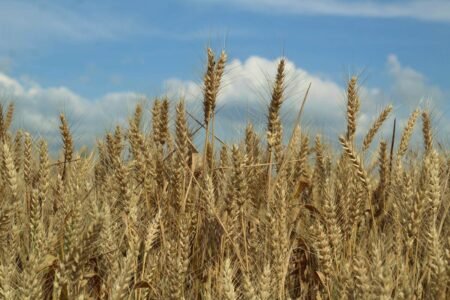Trade agreements have helped to boost EU agricultural exports and have supported jobs in the agri-food sector and other sectors of the economy, according to a new independent study carried out on behalf of the European Commission. Trade agreements with three countries Mexico, South Korea and Switzerland were studied in detail.
Advertisement
What are the key findings of the study for the EU economy and exports?
The study provides evidence that trade agreements have helped to boost agricultural exports and have supported jobs in the agri-food sector as well as in other sectors of the economy.
Three trade agreements were studied in detail: the Association Agreement with Mexico, the free trade agreement (FTA) with South Korea and the trade agreements with Switzerland. The study finds that these three agreements have increased EU agri-food exports by more than 1 billion, have raised value added in the agri-food sector by 600 million and supported thousands of jobs in the agri-food sector across the EU.
What about EU imports?
The findings show that imports from the partner countries have likewise increased, giving EU consumers and processors better access to agri-food products. Importantly, the study suggests that the increased imports due to the three agreements studied should have little impact on EU production. They reflect mainly a replacement of imports from other third countries or an increase in EU consumption.
What about other general key findings of the study?
The study portrays the increasing quality and effectiveness of EU trade agreements in terms of removing agri-food export barriers. A more modern, comprehensive and ambitious agreement such as the EU-Korea (comprising significantly higher tariff removal commitments and stronger Sanitary and Phytosanitary (SPS) provisions) has a higher positive impact than older and less ambitious agreements like the 2000 EU-Mexico agreement.
It underlines the importance of closely following the trade negotiations of our main competitors to make sure that we do not fall behind in access conditions to important markets for our agri-food products. And it demonstrates that increasing protectionist attitudes and scepticism about the value of free trade need to be addressed through better information and communication about the pros and cons of trade liberalisation.
The study also underlines several actions that are important for the success of trade agreements: it emphasises that continued efforts are necessary to lower non-tariff barriers (NTBs) and resolve SPS issues to make sure that EU exporters can really profit from the trade opportunities generated by agreements. It highlights as well the importance of EU promotion campaigns and information actions as tools to help EU exporters access new markets and expand on existing markets.
Why were the trade agreements of the EU with Mexico, South Korea and Switzerland chosen?
The three agreements represent different types of trade agreements that the EU has concluded in the past. The deal with Mexico which entered into force in 2000 represents an older, so called “first generation” trade agreement (negotiations are in fact ongoing to modernise it.[1]) The agreement with South Korea, into force since 2011,is a very ambitious new generation Deep and Comprehensive Trade Agreement (DCFTA). The trade agreements with Switzerland are specific sectorial agreements with an EU neighbour country. The EU and Switzerland have two sectoral agreements that regulate trade in agri-food products (apart from many other sectorals). The agreement covering primary agricultural products entered into force in 2002 and the more recent agreement which covers processed agri-food products entered into force in 2005. As well explained in the study, entry into force for some agri-food products means phasing out of tariffs over several years.
The fact that the study analyses these different types of agreements covering three different geographical regions makes it possible to get a good overview of the impacts and to draw also more general conclusions.
What methodology was applied?
The study applies what is known as a triple-difference model that controls for a range of factors that influence bilateral trade between the trading partners and thus estimates the isolated impact of the agreements. Data on global bilateral trade before and after the trade agreements entered into force on a detailed product level and data on the preferential access granted by the trade agreements are fed into the model. Broader impacts on jobs, value added and CO2 emissions were obtained by using multipliers obtained from an input-output model for the EU economy.
In the report, quantitative analysis is supplemented with five examples providing additional qualitative assessment (Danish pigmeat exports to South Korea, Polish sugar confectionary exports to South Korea, French wine exports to Mexico, EU citrus fruits imports from Mexico and German cheese exports to Switzerland) to get insights beyond the quantitative analysis into the broader impacts of the agreements on actors of the agri-food supply chain. The study team conducted a lot of interviews with producers and traders which provided a lot of information on how trade is functioning in practice and where are still some difficulties to overcome. The case studies are outlined in box 8 (page 53), box 9 (page 56), box 10 (page 63), box 11 (page 64), and box 12 (page 67).
What differentiates this study from the recently presented study on cumulative effects of trade agreements on the agricultural sector?
The cumulative study gives valuable information on potential effects of future trade agreements, focussing on 12 yet to be implemented trade agreements, ranging from some that have already been negotiated (Canada, Vietnam), to some at various stages of negotiation (USA, Mercosur, Japan, Thailand, Indonesia, Philippines), while including two that are still to be negotiated (Australia, New Zealand) and two that involve the modernisation of existing agreements (Turkey, Mexico).
This study, in contrast, looks at the trade and broader economic effects that can be observed from three agreements that have already been concluded and implemented (full implementation is still going on for the agreement with South Korea, as transitional periods for trade liberalisation are gradually phased-in; for Mexico the existing agreement from 2000 is analysed and not the future modernisation for which negotiation are ongoing).
In some publications, the Commission refers to 14,000 jobs being supported per each 1 billion of exports. Why does this study come to around 20,000 jobs in the agri-food sector alone?
The DG TRADE publication[2] refers to the fact that on average each billion euros of extra-EU exports supported around 14,000 jobs in the EU. The figures arrived at in this study, in contrast, are not average figures over all sectors and all countries, but are derived on the basis of estimated trade effects generated by liberalisation of agricultural trade on the individual agreements analysed (using the triple-difference model) multiplied by a specific employment multiplier for the agri-food production. It should also be kept in mind that agricultural production has a particularly high labour intensity.
How were the effects on jobs and value-added assessed?
The estimates of employment and value added, as well as of CO2 emissions, are based on the additional EU exports to the three trading partners due to the trade agreements. A correlation can be established because the quantitative analysis found that the impacts of the agreements were due to an increase in volume rather than an increase in price and that there were no indications of diversion of trade with third countries. However it’s important to state that the inferences made about the impact on employment, value added, and CO2 emissions also rely on other assumptions about the wider economic adjustments to the trade agreements in question, like for example that domestic consumption remains constant. In other words the analysis rules out the possibility that the increase in exports may reflect at least partly a shift of production from the domestic to foreign consumption.
Then, multiplier analysis was applied by using data from the World Input-Output Database (WIOD), which covers 27 EU countries and 13 other major countries in the world for the period from 1995 to 2011. In addition, the WIOD provides data on labour and capital inputs and CO2 emission indicators at the industry level. The multipliers change over time as mechanisation and automatisation that lead to an agricultural intensification process change the composition of input in the agricultural production. It is therefore important to use as recent multipliers as possible. In this case, the most recently available multipliers are from 2011, which means that some of the most recent technological changes are note captured by the multipliers. In other words, the impact on labour for example assumes that labour productivity is constant.
Have the agreements been in place long enough to make sufficiently robust conclusions?
All data are collected on an annual basis over a period spanning from up to five years prior to the implementation of each of the agreements until three years after the agreement has been fully implemented. As the EU-South Korea FTA has not been fully implemented, the impact is evaluated based on 2015 data. This means that the impacts will most likely become stronger as the implementation of the agreement is felt.
Is the increase in imports negative for production in the EU?
An increase in imports as a result of a Free Trade Agreement can essentially mean three things: production within the EU is replaced; imports from a third country are replaced; an increase in consumption (either by the end consumer or as input in further processing).
The study finds that there has been an increase in EU imports from the three trading partners but that there has been no impact on intra-EU trade. This suggests that imports from other countries have been replaced by those from the three countries concerned and/or that EU consumption has increased. Assessing the exact magnitude of these two effects is not possible using the methodology applied in this study.
It is important to note, however, that the impacts highlighted in the study reflect an average across different product sectors.
Full study: Impacts of EU trade agreements on the agricultural sector







